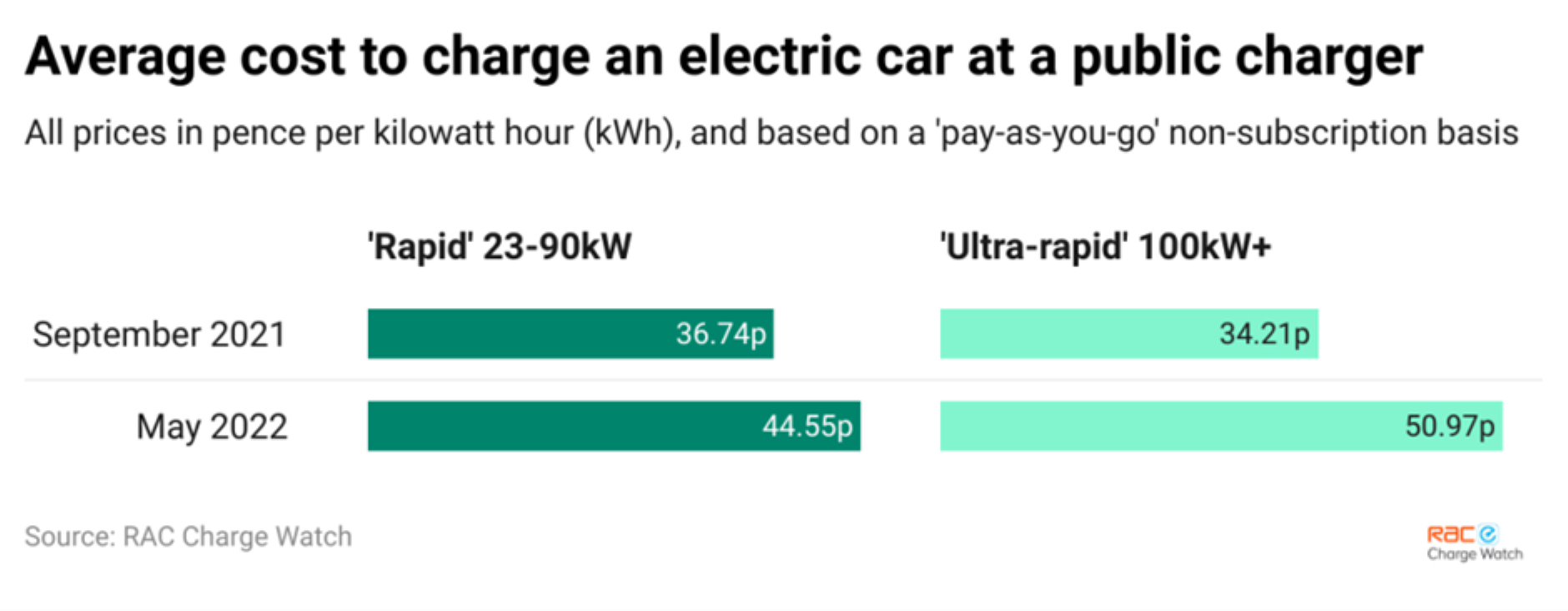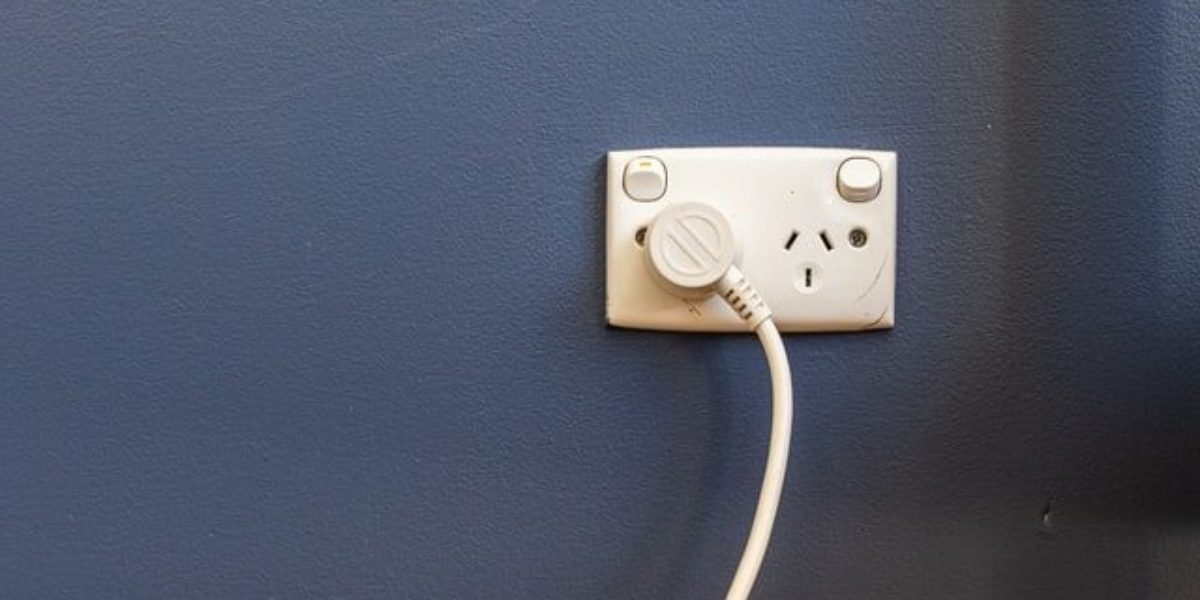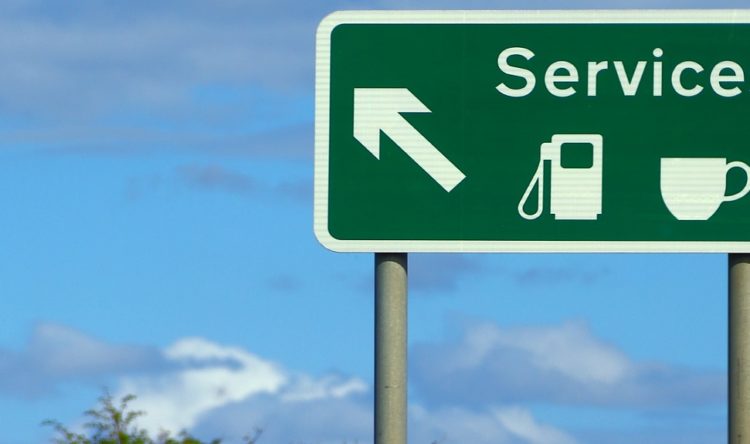EV charging rises too
Electricity price rises affect the cost of charging up your EV
Charging an electric car on a pay-as-you-go, non-subscription basis at a rapid charger has increased by 21% since September.
Analysis by the RAC’s new Charge Watch initiative and the FairCharge campaign shows that the per kilowatt hour (kWh) price has risen by 7.81p, from 36.74p to 44.55p.
Filling up or charging up
The price rises mean that the average cost to complete an 80% rapid charge of a typical family-sized electric car with a 64kWh battery has increased by £4 in the past eight months, from £18.81 to £22.81.
In stark contrast, the cost of filling a 55-litre family car from empty to 80% with petrol has increased by £14.54 to £74.21 – a 24% increase.
The RAC’s analysis shows that it now costs on average 10p per mile to charge at a rapid charger, up from 8p per mile (ppm) last September.
This is nearly half the cost per mile compared to filling a petrol-powered family car. This cost has risen from 15ppm since the end of last September to 19ppm now. The cost per mile for a similarly sized diesel-powered car is even higher at nearly 21p.
Meanwhile, charging at the quickest ultra-rapid chargers has increased by 16.76p per kWh, from 34.21p per kWh in September to 50.97p in May. This means the cost to charge a vehicle to 80% in 20 minutes has risen from £17.51 to £26.10.

Blame the war
The price increases can be explained by the rises in the wholesale cost of electricity. These have been driven by hikes in the cost of gas since Russia invaded Ukraine.
Ofgem figures show that the wholesale cost of gas doubled between the end of September 2021 and the end of March this year. Wholesale electricity prices have risen by around 65% over the same period.
Right at home
RAC electric vehicle spokesperson Simon Williams says “the quickest places to charge are also the most expensive”.
“Ultra-rapid chargers costing on average 14% more to use than rapid chargers”.
This may well be worth it for drivers in a hurry , or travelling a long distance. However, the cheapest charge is at home, “where overnight electricity rates can be much lower than their public charger counterparts”.
The other reason home charging can be so much cheaper is because of the way that electricity is taxed.
“VAT on electricity from a public charger is levied at a rate four-times that which applies to domestic electricity which makes it far more expensive to charge on-the-go than it should be,” explained Williams.
Fairer VAT
The FairCharge campaign is therefore calling for a cut to VAT. The 20% VAT rate currently charged on electricity at public chargers should be cut to match the 5% levied on domestic electricity.
Williams says the RAC “are right behind the FairCharge campaign”. He believes te current variations in VAT “is totally unfair and flies in the face of the Government’s ambition for many more drivers to opt for an electric vehicle”.
“Given the cost-of-living crisis, it’s surely only fair that everyone pays the same level of VAT no matter where they buy their electricity from.”
The RAC has launched Charge Watch to give greater clarity to drivers about what they can expect to pay to charge on public networks.






